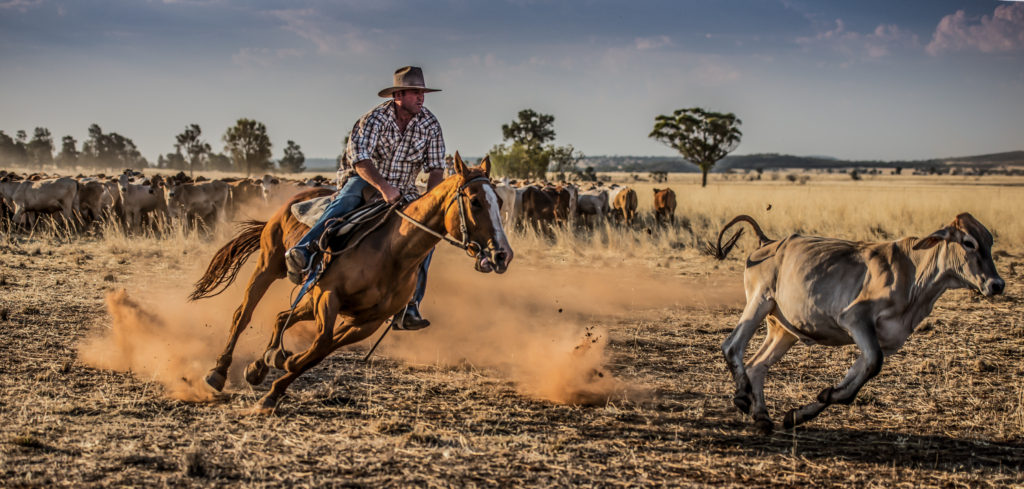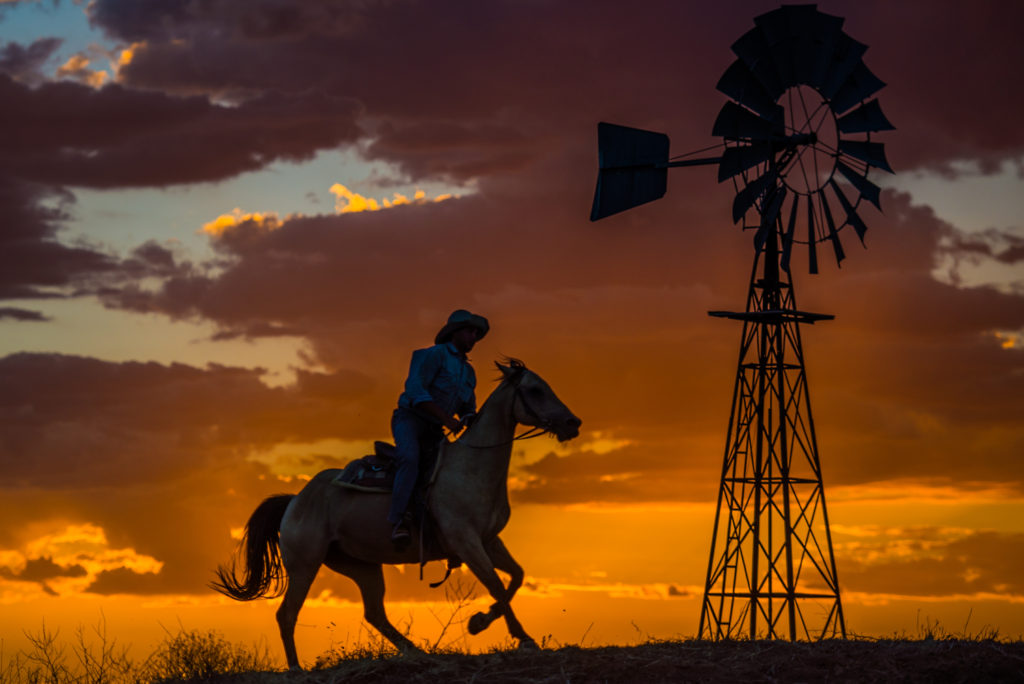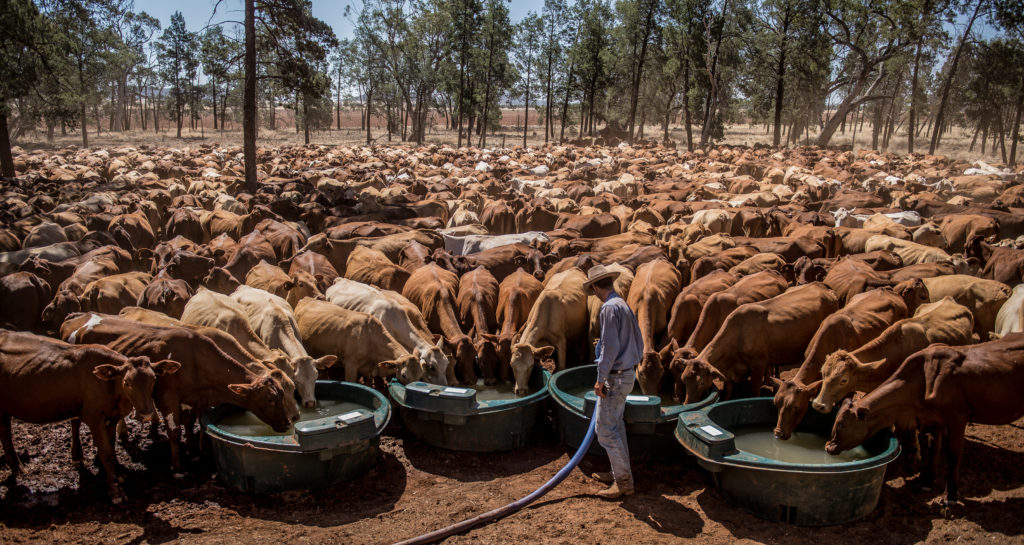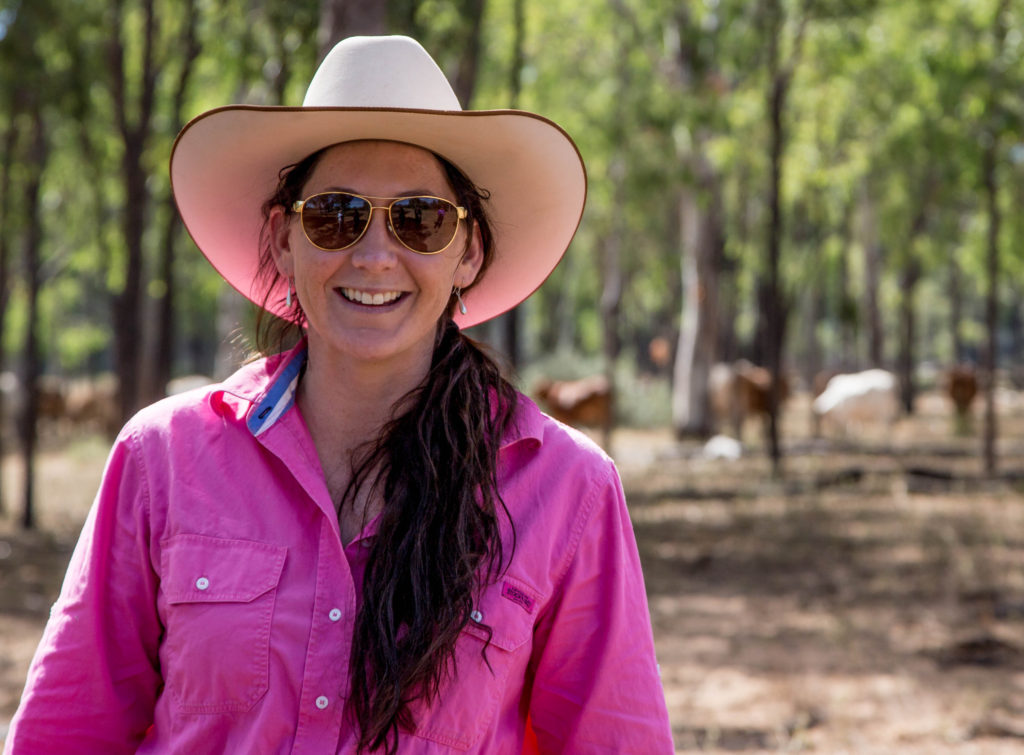Farm & Ranch
The Drover – 18,000 Cattle, Nine Months and 1,600 Miles

By Jessica Crabtree
Imagine if you will, being in the saddle, atop a horse, behind cattle, in the dust and heat for nine months. That’s 39 weeks, 273 days and 6,570 hours. That is just the logistics behind the Brinkworth Cattle Drove of 2013 that took place from Winton, Queensland to Hay, New South Wales, in Australia, traveling various stock routes. Between Queensland and New South Wales are 3.2 million hectares (7,907,372 acres) of stock routes.
It is an authorized thoroughfare for farmers to walk domestic livestock from one location to another. Most commonly the stock route is known as “The Long Paddock.” A huge undertaking, the drovers navigated the stock routes through advisement from the local shire council on which were passable, had good grazing and were with or without water. Permits were written weekly to the “mobs” or herds so that they could keep traveling. The stock routes were put in place years before roads were made and trucks were used to haul cattle. When made, the water was put in place every six miles or so. Modernization proved the demise of the routes.
Australian farmer and agriculture tycoon Tom Brinkworth purchased 18,000 head of cattle in 2013 in the midst of a staggering drought. That totaled $8 million. This was the largest transaction ever in the world from a seller to a buyer in cattle. Brinkworth was challenged with moving his cattle more than 1,600 miles to his station, also known as his ranch. When adding up the cost of freight to truck the massive amount of cattle, it was nearly the same amount of money to simply walk the cattle down. The purchased cattle were eight months to two-year-old breeding heifers. Their breeding was a mix of Brahman crosses, short horn crosses and Santa Gertrudis.
To read more of “The Drover” pick up a copy of the 2017 June NTFR issue. To subscribe call 940-872-5922.
Farm & Ranch
Hazards of Backyard Poultry

By Barry Whitworth, DVM
Having backyard poultry is a popular agriculture enterprise. According to the United States Department of Agriculture, 0.8 percent of all households in the United States have chickens. People keep chickens for a variety of reasons with table eggs being one of the more common reasons.
Unfortunately, some of these poultry producers are not aware of the hazards that come with keeping poultry because many times they carry pathogens but appear healthy.
Chickens are carriers of several zoonotic diseases. These are diseases that can be passed from animals to humans. According to a recent survey in Pennsylvania, a majority of backyard poultry producers were aware of the dangers of avian influenza. However, this study also revealed that far fewer producers were aware of the risk of possible exposure to Salmonella and Campylobacter.
The lack of knowledge about the hazards of raising poultry likely contributes to the continued issues of Salmonella outbreaks associated with backyard poultry. In 2023, the Centers for Disease Control and Prevention reported 1,072 illnesses of Salmonella linked to backyard poultry, and 272 of those patients required hospitalization. Oklahoma reported 43 individuals with the disease.
To read more, pick up a copy of the April issue of NTFR magazine. To subscribe by mail, call 940-872-5922.
Farm & Ranch
Ag Elsewhere: Wyoming

By Tressa Lawrence
Babies are tucked away in every nook and cranny. Many ranchers across Wyoming have baby animals popping up all over this time of year.
Farm & Ranch
Ag Elsewhere: Montana

By Lindsey Monk
Another load of grain in to keep feeding the calves until the green grass can really start popping.
-

 Country Lifestyles1 year ago
Country Lifestyles1 year agoScott & Stacey Schumacher: A Growth Mindset
-

 Equine7 months ago
Equine7 months agoThe Will to Win
-

 Country Lifestyles7 years ago
Country Lifestyles7 years agoStyle Your Profile – What your style cowboy hat says about you and new trends in 2017
-

 Country Lifestyles4 years ago
Country Lifestyles4 years agoAmber Crawford, Breakaway Roper
-

 HOME7 years ago
HOME7 years agoGrazing North Texas – Wilman Lovegrass
-

 Country Lifestyles7 years ago
Country Lifestyles7 years agoDecember 2016 Profile, Rusty Riddle – The Riddle Way
-

 Country Lifestyles8 years ago
Country Lifestyles8 years agoJune 2016 Profile – The man behind the mic: Bob Tallman
-

 Outdoor9 years ago
Outdoor9 years agoButtercup or Primrose?










